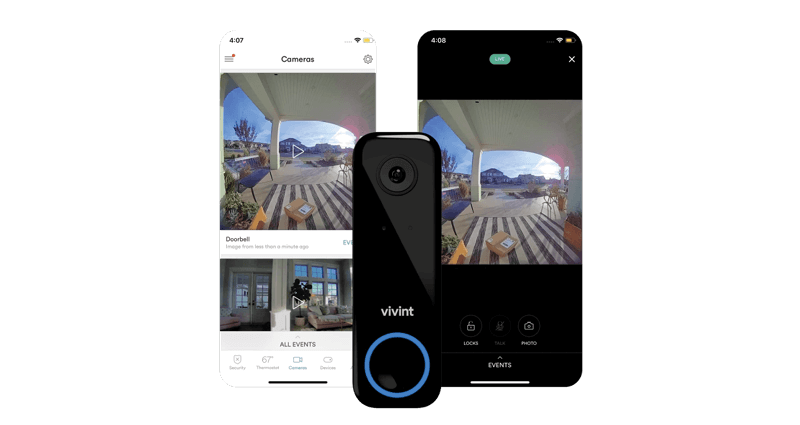Billing cycle. The period for which you will be billed - usually about 28-32 days. The billing cycle will include a start date and end date for each cycle.
CCF. This is a unit you may see on your bill to measure your natural gas consumption. A CCF is equivalent to one hundred cubic feet of natural gas. Your utility may use a different unit of measurement for natural gas consumption like Therm and MCF.
Competitive supplier. Competitive suppliers, also known as alternate suppliers, retail providers or electric service companies, compete with your local utility and each other to provide electricity or natural gas to customers. In areas with deregulated electricity or natural gas, customers can comparison shop for an energy plan or rate with various competitive suppliers like Direct Energy. This allows consumers to choose the supplier, plan and rate that's best for their home and lifestyle.
Deregulation. Deregulation opened energy markets to competition and created choices for consumers. Customers in deregulated areas aren't required to sign up with their utility for electricity or gas service; they still have the option to purchase energy from their local utility, or they can shop available competitive suppliers to find the best fit for their household.
Due date. The date by which your bill payment must be received.
Environmental Disclosure Label. Depending on your state, suppliers may be required to disclose the sources of energy supplied (such as coal, wind or solar energy) and the environmental impacts of those sources in an Environmental Disclosure Label. These documents may also provide air emissions information associated with a plan. This gives you a clearer understanding of the environmental impact of a plan. These documents are also referred to as Power Disclosure Labels or Disclosure Statements. Read more about Environmental Disclosure Labels.
Electric Service Company (ESCO). Companies that compete to provide electricity to customers. In areas with deregulated electricity, customers can shop for an electricity plan with various service companies like Direct Energy. These companies are also referred to as competitive suppliers, retail providers, or alternate suppliers.
Electricity Facts Label (EFL). The Public Utility Commission of Texas (PUCT) requires companies to make this document available to consumers in Texas for each electricity plan they offer. The EFL includes information like the per-kilowatt-hour (kWh) rate, term length of the plan, fees, and other stipulations. In other states, these documents are called Rate Plan Summaries, and in Illinois, you may find additional plan information in the Uniform Disclosure Statement.
Fixed rate. An electricity or gas rate that stays the same for the duration of your plan's term length. Fixed-rate plans protect you from market price fluctuations, but you will typically need to commit to a contract for a specific length of time, and your rate may be higher than the market rate during seasons with low energy demand. However, your rate may also be lower than the market rate during times when the demand for energy is very high.
Kilowatt-hour (kWh). A unit of electricity equivalent to one kilowatt (kW) of power expended for one hour of time. This is the unit used to measure electricity consumption. Most electricity rates will appear as per kWh.
Local Distribution Company (LDC). Your LDC, also referred to as your utility, is responsible for transmitting, connecting, and disconnecting energy to your home and reading and maintaining your home's electric or gas meter. The LDC also maintains the lines and other equipment used to transmit electricity or gas. In some deregulated areas, your LDC may compete on the market with competitive suppliers, selling its own plans and rates to customers.
MCF. Depending on where you live, you may see this unit used on your bill to measure your natural gas consumption. An MCF is equivalent to one thousand cubic feet of natural gas. Your utility may use a different unit of measurement to determine your natural gas consumption, like Therm or CCF.
Meter. Your home's meter is used to measure how much electricity or natural gas you have used in a billing cycle. This information is used to calculate your bill. Your local utility, or local distribution company (LDC), reads and maintains your meter. If you purchase your energy from a competitive supplier, your utility passes this usage information to them.
Month-to-month plan. Energy plan that does not require a contract, so you're able to change plans or providers when you like. While they can give you freedom, you will typically pay a variable rate for your energy. This means the price you pay will fluctuate with market prices and your energy will cost you more during seasons in which there's a high demand.
Rate. The rate you pay per kWh for electricity service, or per CCF, MCF or Therm for gas service.
Rate plan summary. Rate Plan Summaries, or Contract Summaries, are documents that provide details about an electricity or gas plan, such as the rate, term length of the plan, fees and other stipulations. This document is required by the governing body that regulates the electricity market in each state. In Texas, these documents are known as Electricity Facts Labels (EFLs), and in Illinois, you may find additional plan information in the Uniform Disclosure Statement.
System Benefit Fund (SBF). A fund supported by a small charge on energy bills, controlled by the PUC, and applies only to certain customers in deregulated areas of the state.
Term length. The duration, usually in months, of your contract for an electric or gas plan.
Therm. This is a unit you may see on your natural gas bill to measure consumption. A Therm is equivalent to 100,000 British Thermal Units (BTUs) – the amount of heat required to increase the temperature of one pound of water by one degree Fahrenheit. Depending on where you live, you may see a different unit used to measure your natural gas usage, like MCF or CCF.
Total amount due. The amount the customer owes for electricity or gas services. This amount will be a sum of all usage fees (how much energy you used in your billing cycle), as well as any previous balance and supplemental fees, such as utility fees for delivering energy to your home.
Utilities commission. A utility regulatory commission (URC), public utility commission (PUC) or public service commission (PSC) is a governing body that regulates the rates and service of electricity and gas providers to protect consumers and foster competition in deregulated areas.
Utility. Your local utility, also known as your Local Distribution Company (LDC), is responsible for transmitting, connecting and disconnecting electricity or gas to your home and reading and maintaining your home's electric and gas meters. The utility also maintains the lines and other equipment used to transmit electricity or gas. In some deregulated areas, your utility may compete on the market with competitive suppliers, selling its own plans and rates to customers.
Variable rate: An energy rate that may fluctuate based on the current market prices. Variable rate plans typically don't require a contract and allow you to keep up with low seasonal market rates. You'll be able to switch plans or providers whenever it suits you, but you may experience high rates during seasons with high electricity demand, resulting in much higher bills.


































